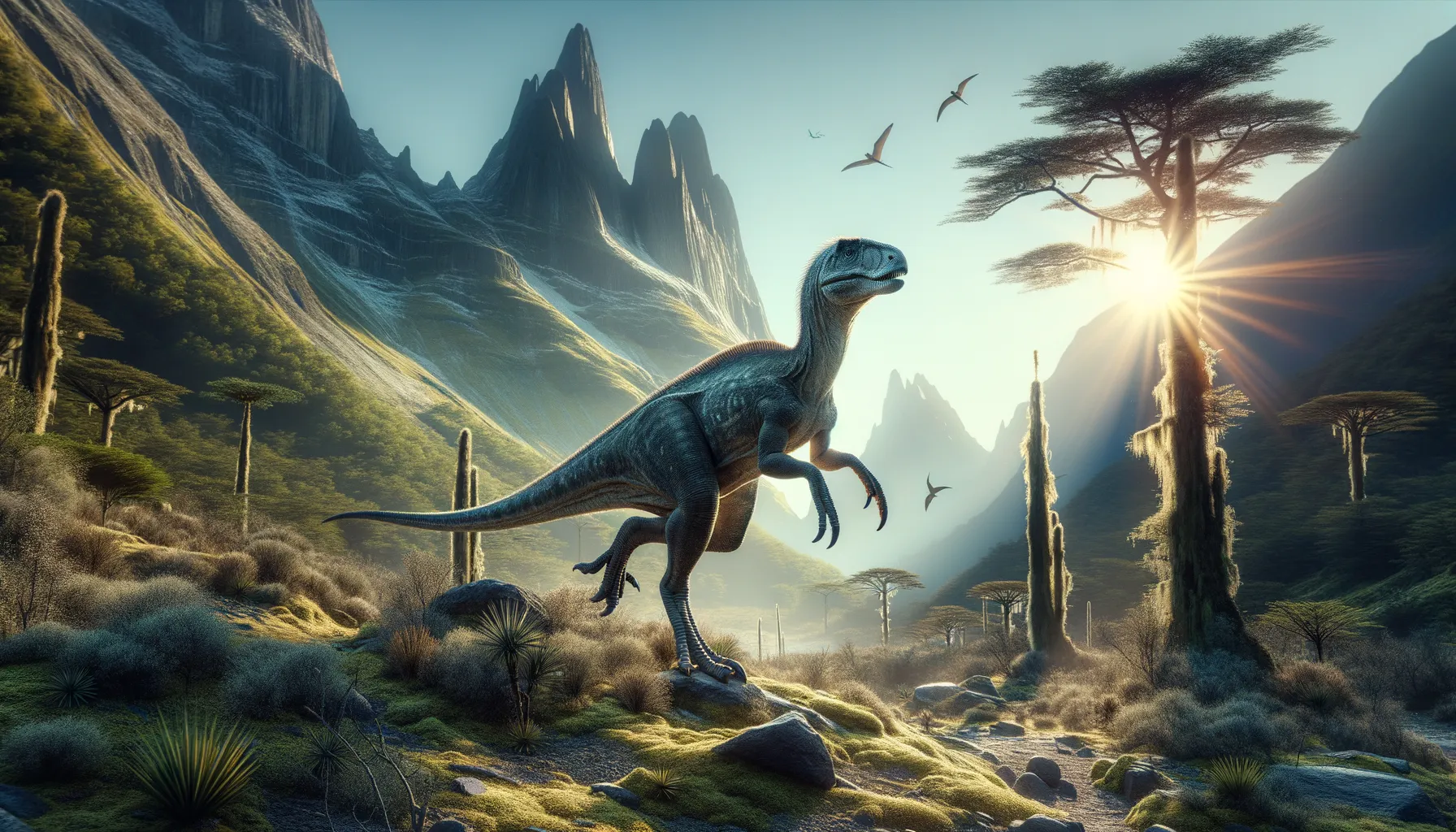
Aniksosaurus
Small, swift, and agile - the nimble hunter.
Period
Cretaceous
Length
About 2 to 3 meters long.
Height
Around 1.5 meters tall at the hips.
Weight
Approximately 65 kilograms.
Aniksosaurus was a small, agile theropod dinosaur that lived during the Late Cretaceous period. Equipped with strong legs and a lightweight body, it could swiftly navigate its environment. The fossils discovered in South America suggest that Aniksosaurus was adaptable and versatile, surviving in diverse habitats. It was likely a predator or scavenger, making it an essential part of its ecosystem.
Diet
Aniksosaurus was likely a carnivore, feeding on small animals and possibly insects. Its sharp teeth and agile build suggest it could catch quick-moving prey.
Hunting
This dinosaur likely hunted during the day, using its speed and keen senses to track down prey. It may have also scavenged or stolen food from other predators when opportunities arose.
Environmental challenges
Aniksosaurus faced predators significantly larger than itself, which required daily caution and swift escape capabilities. Limited availability of prey due to competition could have occasionally presented a challenge. Climate changes during the Cretaceous may have also forced it to adapt to new conditions and available food sources.
Speed
It was likely a fast runner for its size.
Lifespan
Estimated to be several decades.
First discovery
Found in Argentina in 1995.
Fun Facts
- Aniksosaurus was a small dinosaur that lived about 95 million years ago during the Late Cretaceous period.
- It was discovered in what is now Argentina, making it a member of the diverse dinosaur fauna of South America.
- Aniksosaurus is believed to have been a fast and agile runner, likely using its speed to escape predators.
- This dinosaur was relatively small in size, estimated to be around 6.5 feet long and weighing about as much as a large turkey.
- Aniksosaurus had long legs and a lightweight body, traits that suggest it might have been an omnivore.
- The name Aniksosaurus means 'spring lizard,' reflecting its possible agile and bouncy nature.
- Despite its modest size, Aniksosaurus is an important find for understanding the evolution of early theropods.
Growth and Development
Aniksosaurus likely experienced rapid growth during its early years to reach survival-ready size quickly. Its development might have included molts for juvenile specimens. As it grew, changes in its physical structure could have affected its speed and hunting strategies.
Habitat
Aniksosaurus thrived in diverse environments, from dense forests to open plains. This variety in habitat selection supported its reliance on agility and resourcefulness. The regions it inhabited were likely rich in vegetation and water sources, attracting both herbivores and carnivores alike.
Interaction with other species
Aniksosaurus interacted with various other dinosaur species, either as a predator or competitor. Its small size might have made it cautious around larger, often dangerous dinosaurs. Nonetheless, it coexisted in a complex ecosystem where both competition and cooperation helped to maintain balance.
Natural lifespan
Its natural lifespan was likely around 20 to 30 years.
Reproduction
Aniksosaurus likely reproduced by laying eggs, as with most dinosaurs. Nesting sites would have been carefully chosen to protect against predators. Parental care remains speculative, but it may have ensured the young survived to adulthood.
Social behaviour
It is possible Aniksosaurus exhibited some level of social behavior, possibly hunting in groups. Group living could have provided protection against predators. However, territorial disputes may have occurred between rival groups or individuals.
Fossil locations
The primary fossils of Aniksosaurus have been found in Argentina, providing crucial insights into its anatomy and lifestyle. These fossils suggest it had a significant range within the Late Cretaceous period's South American landscapes.
